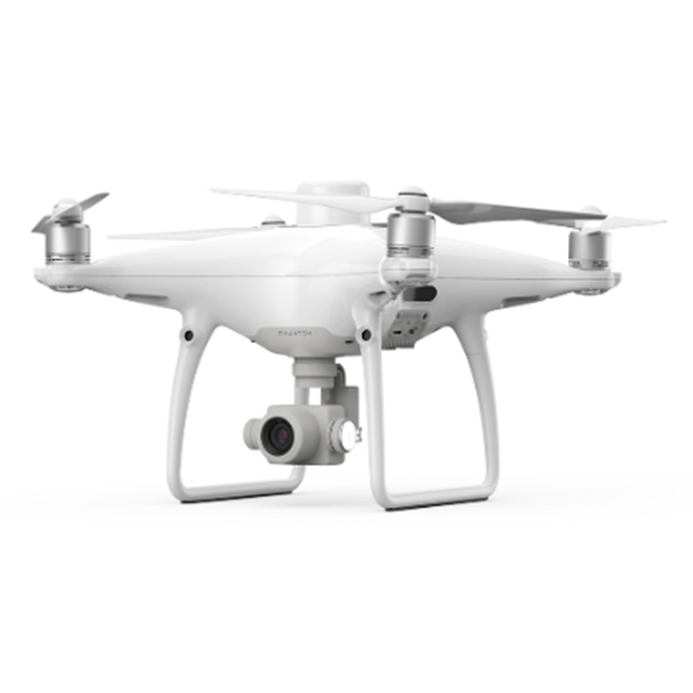
The PwC’s membership network report, Skies without Limits, recently revealed that drone technology is expected to uplift the UK’s construction industry by £8.6 bn by 2030. This growth was largely attributed to innovation and improved productivity. As drone technology becomes more sophisticated, it can offer a range of benefits for civil contractors. Here Ian Barnes, Director at SITECH UK & Ireland, the leading distributor of Trimble technology, shares his thoughts on the benefits of drones.
In the last few years, improvements in drone and unmanned aerial vehicles (UAVs) technology has changed how we use them — they are no longer viewed as just high-tech toys. The use of drones has particularly increased in the construction industry to help businesses improve accuracy and productivity. Additionally, as purchase and set up costs gradually decrease to make the technology more affordable, more construction and civil engineering businesses can benefit from the technology.
There are several benefits of using drones on site, such as improving survey accuracy of large areas without difficulty, collecting and sharing data, and improving health and safety. Improving these areas can help companies keep their infrastructure projects on track and avoid costly delays. Let’s take a closer look at some of their benefits.
Progress tracking
According to a study from Engineers Daily, design errors account for 38 percent of construction disputes. Inaccurate and incomplete designs can push projects behind schedule and over budget as confusion mounts. Progress tracking in drones can limit these issues by capturing highly accurate site data. Contractors simply fly the drone to collect data when it’s required, meaning that there’s no need to halt construction work to complete surveys. Collected data can then be uploaded to a cloud-based platform where contractors can access the data anywhere, anytime and easily interpret the information.
“Civil contractors and surveyors can use the technology to produce weekly progress reports to share across the company and to stakeholders,” explained Jan Wouter Kruyt, Director of European Operations at Propeller, who teamed up with SITECH to develop the Trimble Stratus drone package. “More accurate progress tracking can boost overall efficiency while minimising disputes that can often derail projects. For instance, contractors can highlight the parts of a site that they are excavating and provide an estimate on how long this will take and plan the next stages of construction accordingly.”
Mapping sites
As well as surveying, innovations in drone software now allows contractors to produce detailed 3D maps and models using the data and site footage that they gather from flights. This highly accurate site data can cut costs because the detailed visualisations help teams align on their activities and reduce the risk of design errors that require rework later down the line. For example, Trimble Stratus, powered by Propeller, uses a data analytics and visualisation platform to capture geo-referenced high-resolution aerial images. All they need to do is lay out their ground control points and fly the drones, enabling them to access highly accurate topographic surveys without causing bottlenecks.
As with progress tracking, when 3D mapping is combined with a suitable analytics platform, you can communicate this data across your team and with third parties. Contractors can store and share a single source of truth across the cloud instead of running around with a pencil and a piece of paper. Improved digital mapping also means that every member of the team is aware of the site’s landscape, is working from the same information and immediately receives any updates. Instead of taking hours, or even days to cover the site on foot, all you need to do is fly the drone — providing a real field-to-finish solution for mapping sites.
Health and safety
According to the Health and Safety Executive (HSE) annual report in 2019, slips, trips and falls were the second highest cause of injuries and fatalities in the UK construction industry. Construction companies and shareholders are understandably concerned with any injuries on site and are looking for ways to minimise risk. Drones can quickly complete surveys in dangerous areas and take contractors out of the high-risk areas where these injuries could occur.
Drones are piloted remotely, and this is essential when surveying sites where it is too risky to send people. In quarries, for example, surveying requires people to move around rocky and uneven surfaces that can put people in danger. Some sites also have dangerous structures or hazardous and flammable materials on-site that workers should not be in close proximity to. Instead of sending out engineers with pegs, operators can stay at a safe distance and easily fly the drone over the area to collect data, saving the surveyor time and minimising risk in the process.
As drone technology becomes more sophisticated and accessible to contractors, it could deliver real productivity benefits while minimising risk to workers. It’s hardly surprising that the construction industry will receive a £8.6 bn lift over the next ten years because of these innovations.
Drone flights and data processing provided in an easy to use package that covers workflow, data clarity and the practical is just one of the services developed by SITECH to support the digital worksite. For more information on how you can successfully set up your drone flights, visit https://www.sitechukandireland.com/sitech-drone-services/








